Ákos Rózmann // MASS / MÄSSA ―― 7xCD BOX SET
- Availability:
A 7CD BOX set by Akos Rozmann, an experimental musician from Budapest, Hungary.
Below is a description of the label.
Ákos Rózmann's Mass consists of 1989 electroacoustic works produced by the composer's studio and EMS in Stockholm between 2004 and 12.Like most of Rosman's compositions, Mass is a lengthy work of about seven hours.
Rosman's Mass can be described as a giant fresco of personal observations of the first part of the Catholic Mass, "Killy" and "Gloria."A highly subjective view of the Mass text freezes the image of "Tropez" in Rosman's own words, the Swedish, Hungarian, and Latin meditations for a particular word and its association in the Mass text. It is emphasized by that.Some passages have nothing to do with the Mass sentence.Gloria I's organ song VI (also subtitled Silver and Dance Nocturne) is a kind of lamentation based on the phrase "Natten gråter" (night is crying).The interlude following Gloria I is composed of coffee cup collisions and empty chatter of bureaucratic musicians, which are often seen in concert halls in Sweden, and the composer's unique humor can be felt. ..
The overall formal structure of a mass is complex, with the various parts acting simultaneously as independent songs and as part of a small group within the overall structure of the song.Some independent songs are played under the name of organ songs.For example, the three songs contained in the first Gloria part of the Mass form another independent piece called Triptykon, which premiered in 3 as an independent piece.
In the first half of the Mass, the "positive power" expressed by the words of the Mass is expressed by various challenging sounds such as derogatory laughter, growls, gep, nauseating choking sounds, and vomiting sounds. The battle of "negative power" is unfolded.First, the negative force drags the positive force into a "black hole" or pocket.Then the positive power comes back and dominates the rest of Gloria.This formal narrative, according to an interview with the composer, expresses the nuances of this central confrontation of the Mass from a less dual and more complex perspective.
"In the general sense, everything in the world seems to consist of the notion of positive or negative, but in Triptych (the first three songs in the Gloria songbook) it's not that simple. Different powers are different from each other. Despite their conflict, their interrelationships are more complex than those of good and evil. "
The most prominent sources in the work are the organ, the Hungarian zither, and the human voice.Throughout the song, a vocal group from a church in a village in Corsica sings Latin Mass in solo and chorus.In addition, Scholastic Gregoriana Holmier, conducted by Viveca Selvatius, German Benedictine monks, and Thomas Hammer participate in certain ceremonial protagonists.
Born in Budapest, Hungary in 1939, Akos Rosman studied composition at the Bartok Conservatory and the Liszt Conservatory. He received a scholarship in 1971 and moved to Stockholm, where he studied composition under Ingvar Lidholm at the Royal College of Music and settled in Sweden.He was a longtime organist at the Catholic Cathedral in Stockholm.He met electroacoustic music early on, giving a new direction to his composition.With the exception of his early few songs, Rosman composed exclusively electroacoustic music, often favoring monumental forms, usually full of symbols, with the organ and human voice as the most important sources. It uses a complex and pervasive musical language.As a composer, he reluctantly lived a secluded life and demonstrated great originality without compromise.Rosman's music is often based on ethical or religious (Catholic or Buddhist) grounds for the fundamental question of existence, for example, the giant suite "The Image of Dreams and Death" previously released by the Idealogic Organ. And "12 stations" raises such a question. "
Labels and other worksplease use this form. ///Click here to see more Shelter Press / Recollection GRM / Ideologic Organ releases available at Tobira.
------------------------------
7 CD's packaged in a hardcover slipcase with a pull ribbon, 12 and 20 pages booklets.
Boxset contains an extensive essay on the composition by Gergely Loch and additional texts by Göran Bergendal and Mats Lindström, and visual documentation.
***
Text / artist bio by Ideologic Organ:
" Ákos Rózmann (1939-2005) --Mass
Ákos Rózmann's Mass consists of twelve electroacoustic compositions created between 1989 and 2004 in the composer's studio and at EMS in Stockholm. Like most of Rózmann's compositions, Mass is a long-form work with a duration of around seven hours.
We can describe Rózmann's Mass as an enormous fresco of personal observations on the two first parts of the Catholic Mass, Kyrie and Gloria. The intensely subjective perspective on the texts of the Mass is underlined by Rózmann's freezing images – in his own words – “tropes ”, IE meditations in Swedish, Hungarian and Latin over particular words in the mass text or connection to it. A few passages have nothing to do with the mass text: Organ piece VI in Gloria I (also performed with the subtitle Nocturne in silver and dance) is a sort of lament based on the phrase “Natten gråter” (the night is crying). We find the composer's peculiar sense of humour in the intermezzo following Gloria I – a composed version of the intermission common in Swedish concert houses, complete with clashing coffee cups and empty chatter from the bureaucratic music establishment.
The overarching formal structure of Mass is an intricate one, with the various parts functioning simultaneously as independent pieces and as parts of sub-groups within the whole structure of the piece. As independent pieces, some of them go under the name Organ piece. For example, the three pieces included in the first Gloria part of mass form another independent composition named Triptykon, first performed as a separate work in 1996.
In the earlier parts of Mass, a battle fought between Positive forces is represented by the words in the Mass text and Negative forces represented by various challenging sounds, such as scornful laughter, grunts, burps, nauseous choking and vomiting sounds. First, the Negative powers drag down the Positive forces into a “black hole” or in pockets. Then the Positive forces return to dominate the remaining parts of Gloria. This formal narrative is nuanced by the composer, who, in interviews, offer a less dualistic, more complex viewpoint on the conflict central to the Mass:
“It's presumable that everything in the general sense is about the notion of positive or negative because everything in the world is structured like that. But it's not that simple in the Triptych [the first three pieces of the Gloria-cycle]. Different forces stand against each other, but their interrelation is more complex than that of good and evil. ”
The most prominent sound sources in the work are the organ, a Hungarian zither and human voices. Throughout the whole piece, there is a vocal group from a village church in Corsica, singing the Latin mass texts solo and chorally. Other participants are Schola Gregoriana Holmiae under the direction of Viveca Servatius, a group of German Benedictine monks and – in the role of a sort of master of ceremonies, Thomas Hammar.
Ákos Rózmann was born in 1939 in Budapest, Hungary, where he studied composition at the Bartók Conservatory and the Liszt Academy. In 1971 he received a scholarship to come to Stockholm and completed his compositional studies with Ingvar Lidholm at the Royal College of Music in Stockholm He was the organist at the Catholic Cathedral in Stockholm for a long time. His early encounter with electroacoustic music gave a new direction to his composing. Except for a few early pieces, Rózmann composed solely electroacoustic music – often Rózmann's music is about the preferring a monumental form, usually with the organ and the human voice as the most crucial sound sources in a complex, penetrating musical language loaded with symbols. As a composer, he worked involuntary seclusion, uncompromisingly and with great originality. fundamental questions of existence, often on an ethical or religious (Catholic or Buddhist) basis, for example, in the enormous suites Ima ges of the Dream and Death and Twelve Stations, both previously released on Ideologic Organ. "
Artist: Ákos Rózmann
Label: Ideologic Organ
A 7CD BOX set by Akos Rozmann, an experimental musician from Budapest, Hungary.
Below is a description of the label.
Ákos Rózmann's Mass consists of 1989 electroacoustic works produced by the composer's studio and EMS in Stockholm between 2004 and 12.Like most of Rosman's compositions, Mass is a lengthy work of about seven hours.
Rosman's Mass can be described as a giant fresco of personal observations of the first part of the Catholic Mass, "Killy" and "Gloria."A highly subjective view of the Mass text freezes the image of "Tropez" in Rosman's own words, the Swedish, Hungarian, and Latin meditations for a particular word and its association in the Mass text. It is emphasized by that.Some passages have nothing to do with the Mass sentence.Gloria I's organ song VI (also subtitled Silver and Dance Nocturne) is a kind of lamentation based on the phrase "Natten gråter" (night is crying).The interlude following Gloria I is composed of coffee cup collisions and empty chatter of bureaucratic musicians, which are often seen in concert halls in Sweden, and the composer's unique humor can be felt. ..
The overall formal structure of a mass is complex, with the various parts acting simultaneously as independent songs and as part of a small group within the overall structure of the song.Some independent songs are played under the name of organ songs.For example, the three songs contained in the first Gloria part of the Mass form another independent piece called Triptykon, which premiered in 3 as an independent piece.
In the first half of the Mass, the "positive power" expressed by the words of the Mass is expressed by various challenging sounds such as derogatory laughter, growls, gep, nauseating choking sounds, and vomiting sounds. The battle of "negative power" is unfolded.First, the negative force drags the positive force into a "black hole" or pocket.Then the positive power comes back and dominates the rest of Gloria.This formal narrative, according to an interview with the composer, expresses the nuances of this central confrontation of the Mass from a less dual and more complex perspective.
"In the general sense, everything in the world seems to consist of the notion of positive or negative, but in Triptych (the first three songs in the Gloria songbook) it's not that simple. Different powers are different from each other. Despite their conflict, their interrelationships are more complex than those of good and evil. "
The most prominent sources in the work are the organ, the Hungarian zither, and the human voice.Throughout the song, a vocal group from a church in a village in Corsica sings Latin Mass in solo and chorus.In addition, Scholastic Gregoriana Holmier, conducted by Viveca Selvatius, German Benedictine monks, and Thomas Hammer participate in certain ceremonial protagonists.
Born in Budapest, Hungary in 1939, Akos Rosman studied composition at the Bartok Conservatory and the Liszt Conservatory. He received a scholarship in 1971 and moved to Stockholm, where he studied composition under Ingvar Lidholm at the Royal College of Music and settled in Sweden.He was a longtime organist at the Catholic Cathedral in Stockholm.He met electroacoustic music early on, giving a new direction to his composition.With the exception of his early few songs, Rosman composed exclusively electroacoustic music, often favoring monumental forms, usually full of symbols, with the organ and human voice as the most important sources. It uses a complex and pervasive musical language.As a composer, he reluctantly lived a secluded life and demonstrated great originality without compromise.Rosman's music is often based on ethical or religious (Catholic or Buddhist) grounds for the fundamental question of existence, for example, the giant suite "The Image of Dreams and Death" previously released by the Idealogic Organ. And "12 stations" raises such a question. "
Labels and other worksplease use this form. ///Click here to see more Shelter Press / Recollection GRM / Ideologic Organ releases available at Tobira.
------------------------------
7 CD's packaged in a hardcover slipcase with a pull ribbon, 12 and 20 pages booklets.
Boxset contains an extensive essay on the composition by Gergely Loch and additional texts by Göran Bergendal and Mats Lindström, and visual documentation.
***
Text / artist bio by Ideologic Organ:
" Ákos Rózmann (1939-2005) --Mass
Ákos Rózmann's Mass consists of twelve electroacoustic compositions created between 1989 and 2004 in the composer's studio and at EMS in Stockholm. Like most of Rózmann's compositions, Mass is a long-form work with a duration of around seven hours.
We can describe Rózmann's Mass as an enormous fresco of personal observations on the two first parts of the Catholic Mass, Kyrie and Gloria. The intensely subjective perspective on the texts of the Mass is underlined by Rózmann's freezing images – in his own words – “tropes ”, IE meditations in Swedish, Hungarian and Latin over particular words in the mass text or connection to it. A few passages have nothing to do with the mass text: Organ piece VI in Gloria I (also performed with the subtitle Nocturne in silver and dance) is a sort of lament based on the phrase “Natten gråter” (the night is crying). We find the composer's peculiar sense of humour in the intermezzo following Gloria I – a composed version of the intermission common in Swedish concert houses, complete with clashing coffee cups and empty chatter from the bureaucratic music establishment.
The overarching formal structure of Mass is an intricate one, with the various parts functioning simultaneously as independent pieces and as parts of sub-groups within the whole structure of the piece. As independent pieces, some of them go under the name Organ piece. For example, the three pieces included in the first Gloria part of mass form another independent composition named Triptykon, first performed as a separate work in 1996.
In the earlier parts of Mass, a battle fought between Positive forces is represented by the words in the Mass text and Negative forces represented by various challenging sounds, such as scornful laughter, grunts, burps, nauseous choking and vomiting sounds. First, the Negative powers drag down the Positive forces into a “black hole” or in pockets. Then the Positive forces return to dominate the remaining parts of Gloria. This formal narrative is nuanced by the composer, who, in interviews, offer a less dualistic, more complex viewpoint on the conflict central to the Mass:
“It's presumable that everything in the general sense is about the notion of positive or negative because everything in the world is structured like that. But it's not that simple in the Triptych [the first three pieces of the Gloria-cycle]. Different forces stand against each other, but their interrelation is more complex than that of good and evil. ”
The most prominent sound sources in the work are the organ, a Hungarian zither and human voices. Throughout the whole piece, there is a vocal group from a village church in Corsica, singing the Latin mass texts solo and chorally. Other participants are Schola Gregoriana Holmiae under the direction of Viveca Servatius, a group of German Benedictine monks and – in the role of a sort of master of ceremonies, Thomas Hammar.
Ákos Rózmann was born in 1939 in Budapest, Hungary, where he studied composition at the Bartók Conservatory and the Liszt Academy. In 1971 he received a scholarship to come to Stockholm and completed his compositional studies with Ingvar Lidholm at the Royal College of Music in Stockholm He was the organist at the Catholic Cathedral in Stockholm for a long time. His early encounter with electroacoustic music gave a new direction to his composing. Except for a few early pieces, Rózmann composed solely electroacoustic music – often Rózmann's music is about the preferring a monumental form, usually with the organ and the human voice as the most crucial sound sources in a complex, penetrating musical language loaded with symbols. As a composer, he worked involuntary seclusion, uncompromisingly and with great originality. fundamental questions of existence, often on an ethical or religious (Catholic or Buddhist) basis, for example, in the enormous suites Ima ges of the Dream and Death and Twelve Stations, both previously released on Ideologic Organ. "
Artist: Ákos Rózmann
Label: Ideologic Organ
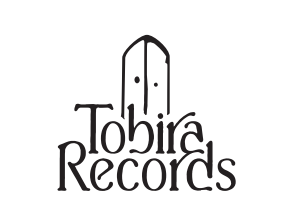
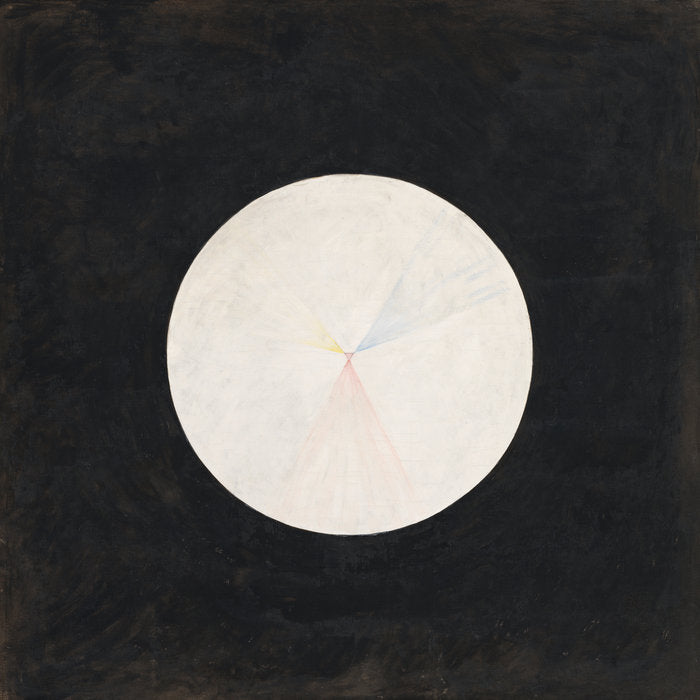
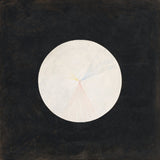
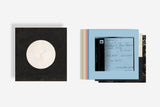
![Danny Clay // No More Darkness, No More Night LP [COLOR] / CD](https://tobirarecords.com/cdn/shop/files/a1861547972_16_medium.jpg?v=1713246114)
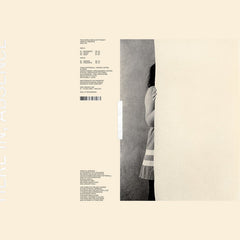
![Aiko Takahashi // It Could Have Been A Beautiful LP [COLOR] / CD](https://tobirarecords.com/cdn/shop/files/a1129639910_16_584ac81a-5a8d-47b5-9d0e-2eaaea0b9eef_medium.jpg?v=1713242480)
![Sonmi451 // The Eighteen Minute Gap LP [COLOR] / CD](https://tobirarecords.com/cdn/shop/files/a1724426681_16_b353df80-bc55-443f-a084-c5685e14784f_medium.jpg?v=1713242390)